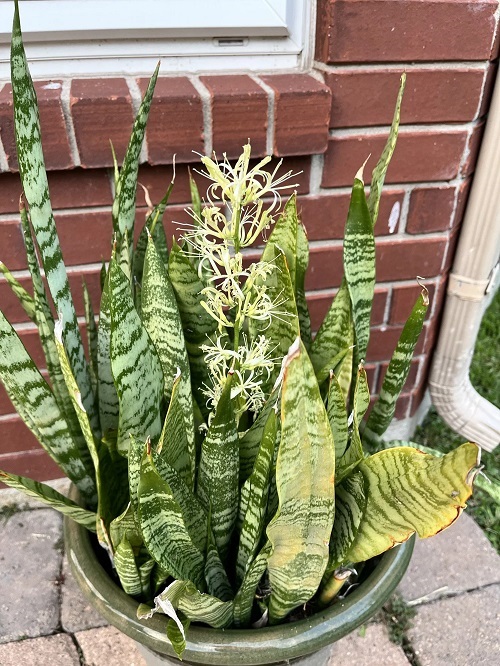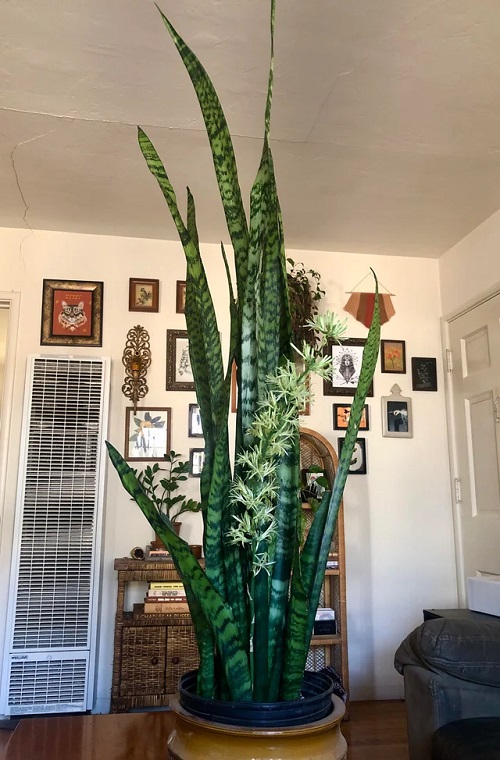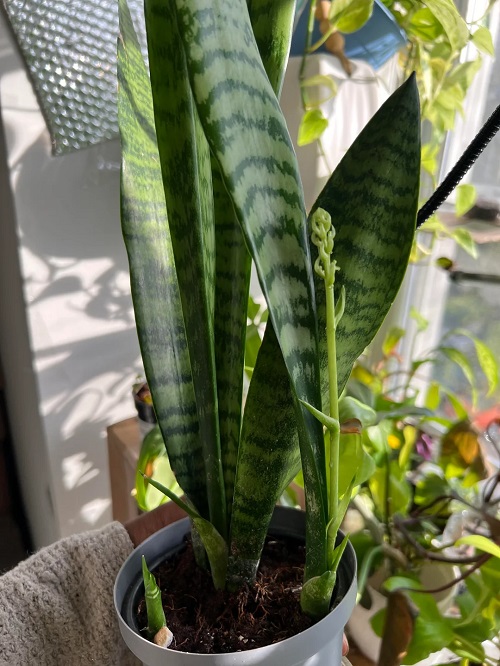Wondering How to Make a Snake Plant Bloom? Discover some expert tips and tricks that nobody knows!

Did you ever see a snake plant blooming? If not yet, it’s high time you apply these tricks to coax out those rare flowers. With a few smart tweaks here and there, you can easily learn how to get a snake plant bloom!
Learn Some Quirky Ways To Style Your Home With Snake Plants
Do Snake Plants Flower?
Yes, snake plants bloom, but rarely!
Typically, these hardy plants focus their energy on leaf growth rather than blooming. However, it is possible to make a snake plant flower by inducing certain environmental changes that would stress them to do so. Apart from that, it also depends on the plant variety and age, which might have you in luck!
How Often Do Snake Plants Flower?

These plants are full of surprises and don’t stick to a strict schedule. However, when they feel stressed enough to produce flowers, they do so annually in the spring or summer months. This phenomenon is not just rare but super unpredictable. Generally, mature plants that are a minimum of 4-5 years old are more likely to produce flowers than younger ones.
How to Make a Snake Plant Bloom?
1. Pick the Right Variety
If you are desperate to make your snake plant bloom, bring home the ‘moonshine’ or ‘cylindrica’ varieties. These have a higher chance of blooming under the right conditions. Conversely, varieties like ‘laurentii’ or ‘masoniana’ will disappoint you no matter how hard you try!
Another trick is to have a word with the garden keeper and get a mature plant from the nursery. Younger ones may take several years before they are even capable of flowering.
2. Expose it to Indirect Sunlight

Being a really sturdy plant, we tend to keep a snake plant mostly in absolute shade and neglect. But, if you want to witness your snake plant blooming, let it bask in bright, indirect sunlight, especially in winter when the sun is not that harsh outside.
A spot near a window that gets plenty of light but is shielded from harsh direct rays is ideal. You can also place it on a shaded porch that receives direct but mild morning sunlight. It will act like an extra dose of energy to initiate the flowering process without the risk of sunburnt leaves.
3. Keep it a Little Thirsty
Water is life, but when it comes to encouraging your snake plant to flower, less is more. Allow the soil to dry out between waterings completely and cut back, especially during the cooler months. This drought-like condition will trick the plant into thinking it’s time to reproduce, prompting it to flower.
Remember, the goal is not to underwater consistently but to create a cycle that mimics natural conditions.
4. Neglect the Temperature but Carefully
Snake plants like a stable environment, but a slight variation in temperature can actually encourage them to bloom. Keep the room at a comfortable 60-85°F (15-29°C), but don’t worry about small natural fluctuations, especially between day and night in winter.
In their native habitat, Sansevierias bloom naturally without needing any special temperature control. And that’s what you have to mimic.
5. Fertilize Sparingly
Fertilization is like a vitamin boost for your snake plant that it uses to produce sturdy, lush leaves, not flowers. Use a balanced, water-soluble fertilizer, but only during the growing seasons of spring and summer, and sparingly at that.
With consistent nutrition, plants tend to focus on the green leaves at the expense of flowers. So it’s okay to neglect its fertilizing needs for a few months so it stays healthy, but not so much that it forgets about flowering.
6. Let it Go Root Bound

Snake plants have a peculiar habit of flowering when they feel a little cramped. Avoid repotting your plant too often. Letting it become slightly root-bound with many pups growing here and there can actually encourage it to flower.
The plant interprets this snug environment as a sign that it’s time to reproduce, potentially leading to those elusive blooms.
7. Be Patient and Observant
Lastly, remember that each snake plant is unique. What works for one might not work for another. Regularly check on your plant’s health, and don’t go overboard with stressing it. As the plant doesn’t go into dormancy as such, the aim is to create a period of neglect so it blooms naturally.
Remember—it is all about stressing with care, not neglecting its genuine needs that might eventually kill the plant.
FAQs
1. Does a Snake Plant Die after Flowering?
Nope, a snake plant won’t die after flowering. Unlike some plants that have a one-and-done approach to life after blooming, snake plants keep on thriving post-flower show.
2. How Does a Snake Plant Flower Smell?
Snake plant blooms have a sweet, slightly surprising fragrance. It’s not overwhelming, but it’s definitely a pleasant, light scent that might make you do a double-take and wonder about its source.
3. Is a Snake Plant Flower Lucky?
Well, in the world of plant folklore, seeing a snake plant flower can be considered a stroke of good luck. Why? Because it’s such a rare event! So, if your snake plant blooms, feel free to do a little happy dance and maybe wait for something good to happen!






